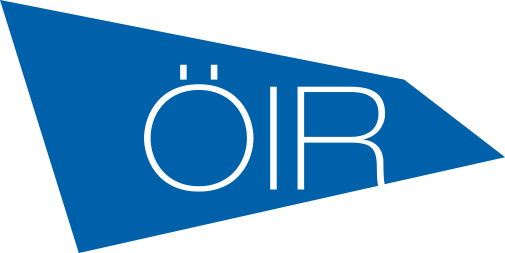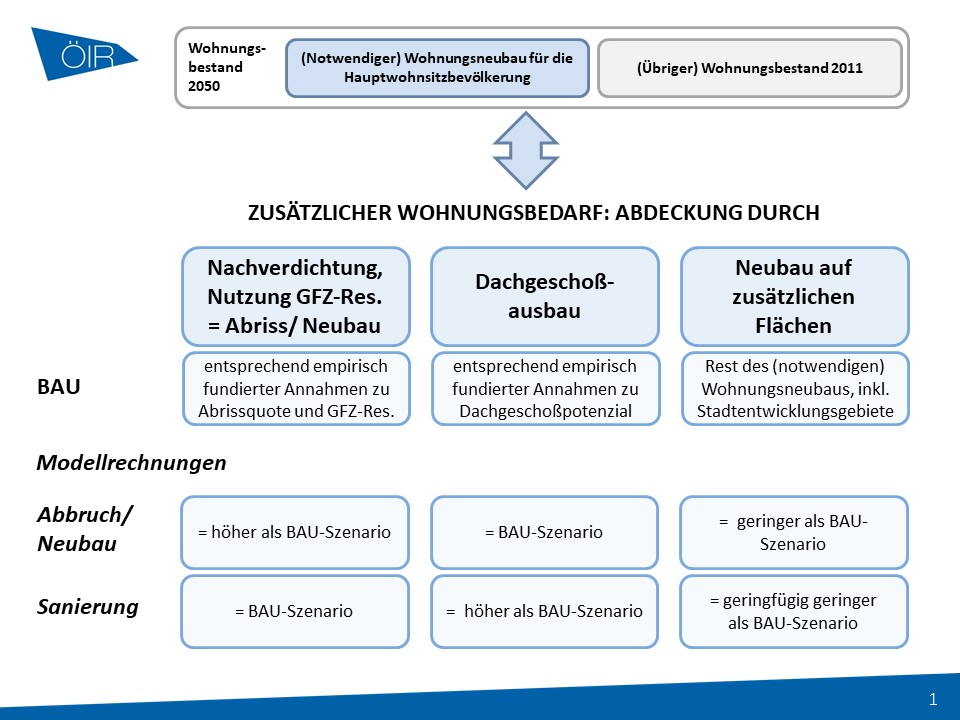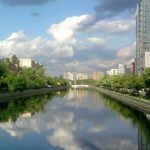The scientific research project examines urban transformation paths with regard to their impact on energy generation and consumption, emissions, material flows and future employment in the transport and building sectors for Vienna. The project team developed scenarios and model calculations, for which energy flows, grey energy, material flows and material storage as well as the resulting environmental impacts were calculated and compared in an integral model. By also considering the potential effects on employment and the quality of work, specifically in the area of green jobs, a holistic analysis of urban transformation towards a low carbon future is shown.
General model of calculation related on buildings, © ÖIR GmbH
Within the scope of the project, ÖIR contributed important basic scientific work by developing the future scenario for the spatial urban development of Vienna until 2050, including related future urban form and building structures. Using model calculations, the effects of these developments have been calculated in order to estimate the metabolic effects on the urban building and transport sector. In addition, ÖIR contributed to the project through profound knowledge on integrated urban development and the implementation of smart city measures. The project results provide valuable detailed information for the city administration regarding future development paths and their effects on energy and resource consumption in the city of Vienna. They will support the ongoing discussion on transformation strategies for the city, based on improved insight into the complex interrelationships between urban energy and resource flows.






